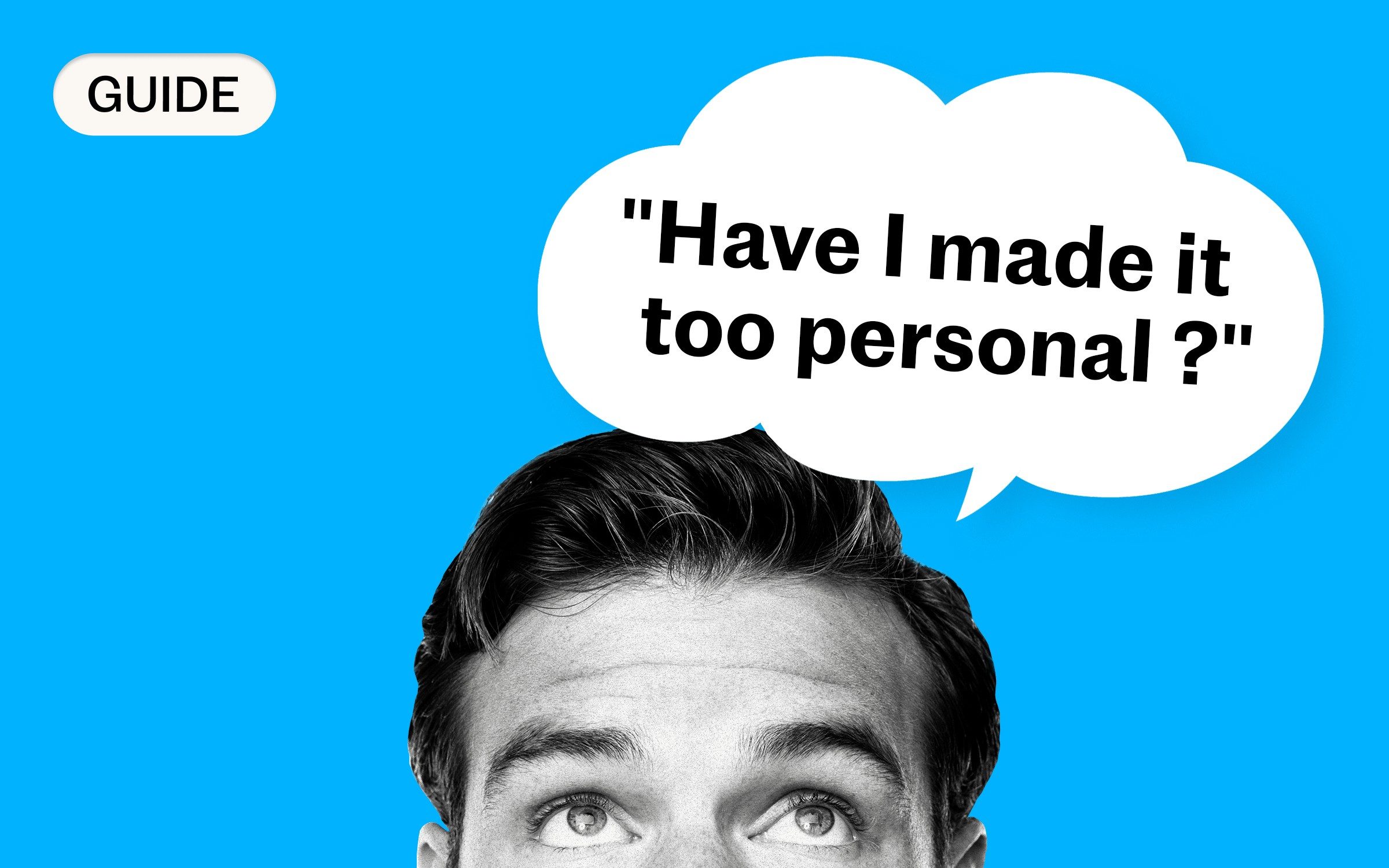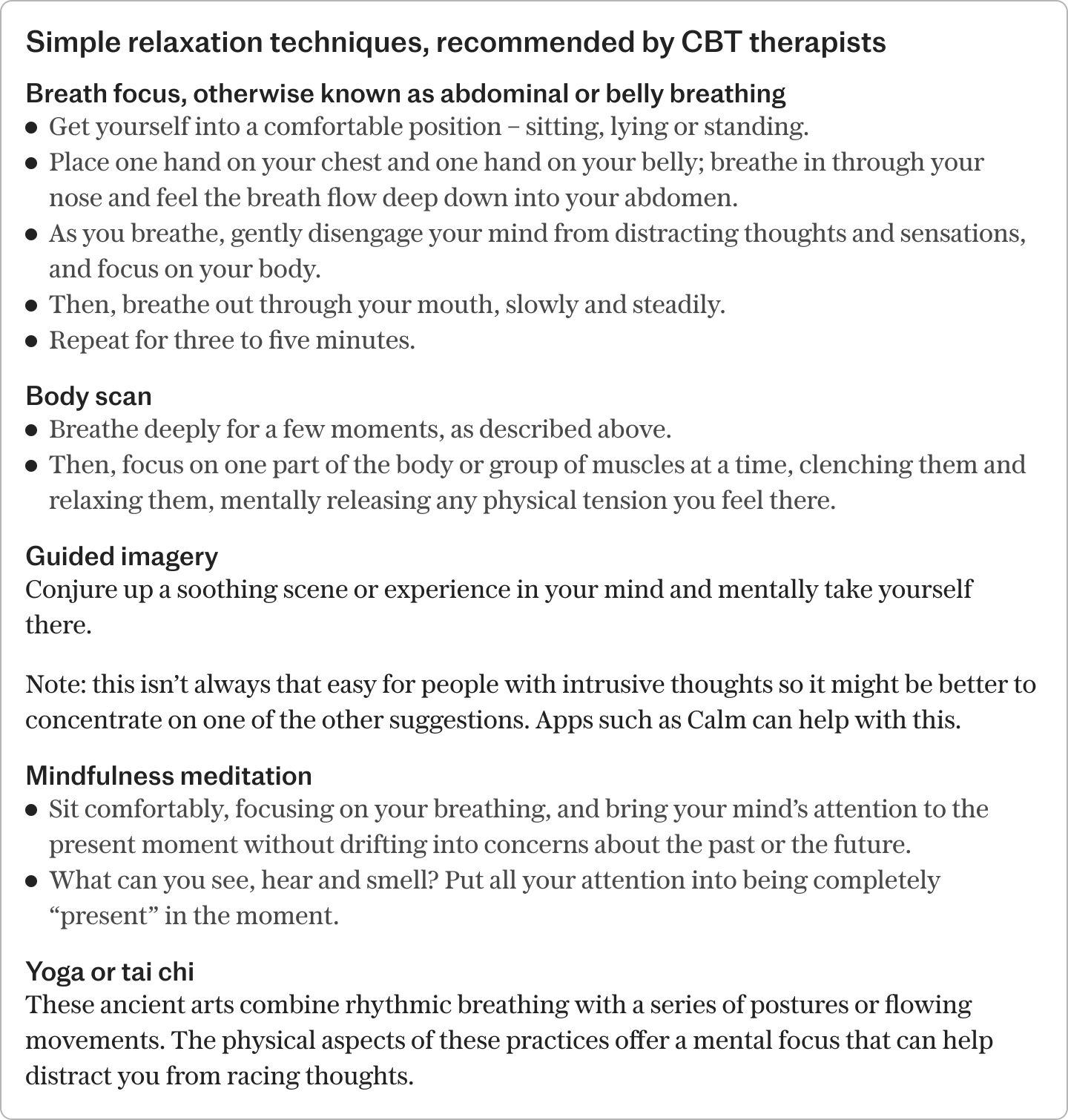

.
According to the charity, Mind, one in four people will experience a mental health problem of some kind each year in England, with one in six experiencing anxiety or depression in a given week.
CBT was invented in the 1960s by the American psychotherapist Aaron Beck, and now forms a major pillar of the NHS Talking Therapies for Anxiety and Depression programme. In 2022/23, 1.76 million people in England were referred to TTAD, many of whom received CBT.
Whether you’ve received a diagnosis from your doctor, or just suffer with ‘everyday’ moments of spikes of worry or fear, the CBT way of viewing the world can be life-changing. Read on:
What is CBT?
“Cognitive behavioural therapy teaches a person to ask themselves: why am I struggling with this?” says Owen O’Kane, a psychotherapist. “People get stuck with ways of thinking; CBT teaches them to stop their behaviours working against them, so they become ‘unstuck’.”
. “Most people don’t realise how their thinking influences their mood, and their emotions such as anxiety or fear. Our thoughts impact on our emotions and our emotions impact on our thoughts. It’s a two-way street.”
CBT teaches us how to reframe that thinking and change our relationship with our thoughts with a view to changing our actions, he says. With the guidance of a therapist, you learn to use problem-solving skills to cope with difficult situations, and learn a greater confidence in your own abilities.
How does CBT work?
CBT isn’t as simple as “positive thinking,” as people often believe. Rather, it’s learning to think realistically, using the evidence in front of you to come to a more likely and sensible conclusion.
“Our emotions are the product of what we are thinking, how we respond in our behaviours and how our body reacts,” says Colette Hirsch, a professor of cognitive clinical psychology and an honorary consultant clinical psychologist at King’s College, London. “You can’t just feel less anxious by trying, but you can if you change your thinking process.” By doing this, she and other experts claim, you will eventually start to break self-defeating patterns of behaviour.
“People get into thinking habits that can lead to interpretation of the world in a particular way,” says Hirsch. “If you are anxious, you interpret the world more negatively.”
Say, for example if you are on a business Zoom call and your client’s face is not particularly animated. “An anxious person might think: ‘I’m boring him”,” says Prof Hirsch.
“On the other hand, a person with healthier thinking habits might just think: ‘this client is simply processing what I’m saying and taking it all in’, and not get upset by it.” The goal is to start thinking more in the second type of way.
Unlike some other types of therapy, CBT is practical, has a limited number of sessions, and is aimed at looking and moving forward. Most of the ‘work’ happens outside the therapy session, as clients are encouraged to use the strategies they have learned in daily life.
How successful is CBT?
.
Given the length of NHS waiting lists, patients might see a CBT therapist more quickly by going privately. But the real goal of CBT is that – with practice – you won’t need a therapist at all.
Who is CBT for?
“CBT has been shown to have good outcomes for people with any form of depression, anxiety, health anxiety, PTSD or obsessive compulsive disorder,” says Prof Hirsch. Evidence suggests that CBT is particularly useful for those with anxiety. O’Kane says: “70 per cent of people with an anxiety disorder who attend CBT will recover.”
And you don’t have to suffer from a diagnosable condition such as depression or anxiety to benefit from it: we all have moments of worry or uncertainty.
How about bipolar disorder, schizophrenia, or psychosis?
“It’s now being used with the more serious conditions such as bipolar disorder or psychosis, where for many years it wasn’t considered,” says Prof Hirsch. In these latter conditions, CBT is used in partnership with medication. It can also help with eating disorders and substance disorders, as well as insomnia.
menopause is a physical condition that needs treatment with HRT.
Some CBT tricks
Stop catastrophising
You walk past your boss at work, and they do not return your smile. An anxious person’s thoughts will go into overdrive. What if they don’t like me? What if they think I’m rubbish? What if I lose my job? How will I pay my mortgage? Will I be homeless and end up in the gutter?
“In CBT, we call this catastrophising,” says O’Kane. “It’s like a snowball caused by overthinking. The healthy way to stop this is to look for a different interpretation: maybe your boss has just had a bad meeting themselves. Right now you are telling yourself: “I’ll be fired”. But how many times in your life have you really been fired? You need to look at the evidence, stop the worry, as there is a possibility it’s exaggerated. Take the charge and the energy out of that thought.”
Learn to let go of safety behaviours and avoidance
“Most anxious people put a lot of energy into not being anxious,” says O’Kane. “They act in a certain way to avoid these feelings - often avoiding the situation that makes them worried - but this only has short-term gains.”
For example, say you are terrified of public speaking. “The anxiety tells you you are going to fail, so your safety behaviour says ‘don’t do it,” says O’Kane. “This will bring you short-term relief but avoiding the situation has reinforced your belief, and set a pattern.” Instead, encourage yourself to find a gradual, graded way to drop your safety behaviours, starting with a very short public talk. Face your fear and in so doing, you will defuse it.
If you are scared of flying, the only way to really get over this is to get on a plane - but start with a short hop.
Reassurance from others brings only short-term gain
Seeking reassurance from family or social networks might take the edge off in the short term, but this behaviour feeds the pattern of avoidance and stops you building self-reliance. “The best way is to learn to self-reassure,” says O’Kane. “I can do this, I will be OK, the evidence is that I managed this last time.”
Concentrate on behaviours that will serve you rather than undermine you
Exercise, learn to relax and eat well, and try not to rely on substances to comfort yourself, such as alcohol, drugs, or even food. “If you use an external stimulus to comfort your anxiety, you’ll feel chemically worse the next day,” says O’Kane.
How is CBT delivered?
“There are a lot of therapists out there offering CBT, but check their credentials to make sure they’ve done more than just a weekend course,” says Owen O’Kane. “Take a good look at their website to find out.” Things to look out for include:
Digital apps for CBT
. Here are a few to choose from
Be your own CBT therapist
“I have a fundamental belief that most people benefit from the skills therapy teaches,” says Owen O’Kane. “We aren’t taught as children to deal with difficult thoughts and emotions, and we have greater control than we realise.” O’Kane maintains that micro-injections of CBT “can make the difference between a good day and a bad one. One rejection won’t make you feel useless and one funny look won’t ruin your day.”

An example of CBT in action, by Owen O’Kane
Recommended
Is EMDR another therapy fad or does it actually work?
Read more
Play The Telegraph’s brilliant range of Puzzles - and feel brighter every day. Train your brain and boost your mood with PlusWord, the Mini Crossword, the fearsome Killer Sudoku and even the classic Cryptic Crossword.


Post a Comment
0Comments